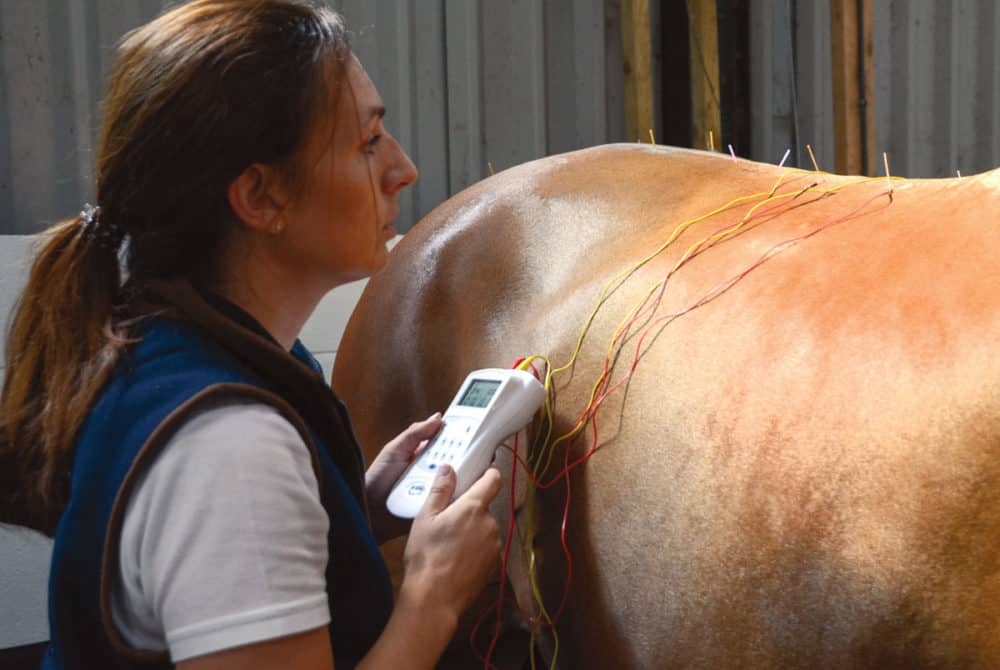Acupuncture
Posted 29th April 2019
We’ve all heard the numerous benefits that acupuncture has been proven to have on humans, but how do these translate for horses? Dr Charlotte Inness explains

Acupuncture is the practice of inserting fine, solid needles into the body for pain relief or, in some cases, to help the body deal with other diseases and promote health. The word acupuncture is derived from the Latin, Acus, meaning needle, and Puncture. The use of acupuncture is most commonly recognised from traditional Chinese medicine dating back 3,000 years. However, the art of piercing the skin as a therapeutic technique has developed independently around the world.
Modern practice of acupuncture in the UK has two main approaches however, in general, it’s recommended following a clinical diagnosis from your vet, using specific areas and tender or trigger points. The second approach, traditional Chinese acupuncture, does involve diagnosis and point selection but it’s more philosophically-based.
How does it work?
Acupuncture affects the nervous system directly. Needles are placed in locations close to bundles of nerves and blood vessels, to block pain messages and encourage your horse’s central nervous system to produce more of his body’s painkillers. Locally, his nerves are stimulated and blood vessels dilate, which increases blood flow. His body’s pain and stress relieving chemicals are also released, which block pain receptors.
Acupuncture needles don’t stimulate the same nerves that cause your horse pain. They stimulate other nerves that send more important messages to the brain, blocking pain.
What can acupuncture help?
Pain is the most common reason your horse might need acupuncture. Usually, this is pain associated with arthritis, but can also be due to muscle strain and bony changes of the spine. Conditions, such as laminitis and trigeminal-mediated headshaking, may also respond well to treatment.
Myofascial trigger points are the usual causes of pain and dysfunction of the musculoskeletal system. These trigger points are often caused by short-term physical strain or long-term chronic fatigue. They can also be secondary to another pathological process.
They cause a deep, dull ache that can vary in severity, and muscles with an active trigger point are shortened, resulting in restricted movement.
Trigger points are treated by applying direct, specific pressure. One of the most effective ways to achieve this is through acupuncture needling.
Acupuncture is also beneficial in combination with traditional veterinary medicine. It can speed up recovery and, especially in conditions that aren’t responding significantly to painkillers, it’s a safe alternative well worth considering.
Did you know?
Myofascial pain refers to pain caused by muscular irritation. This is often due to muscle weakness or imbalance.
Understand more about acupuncture in June Horse&Rider, on sale 2 May.










